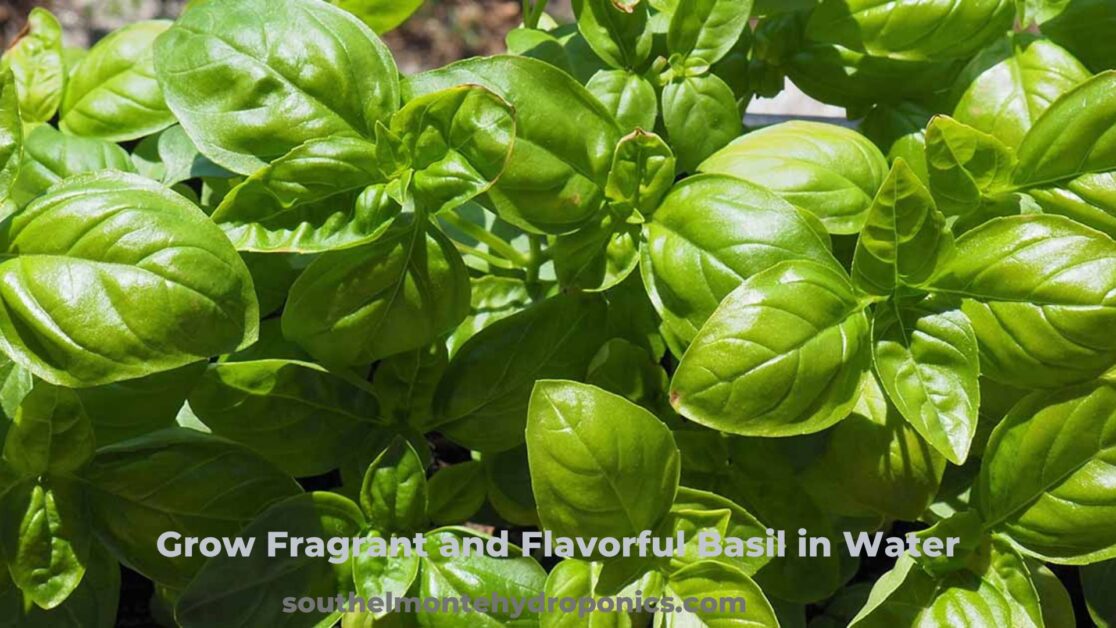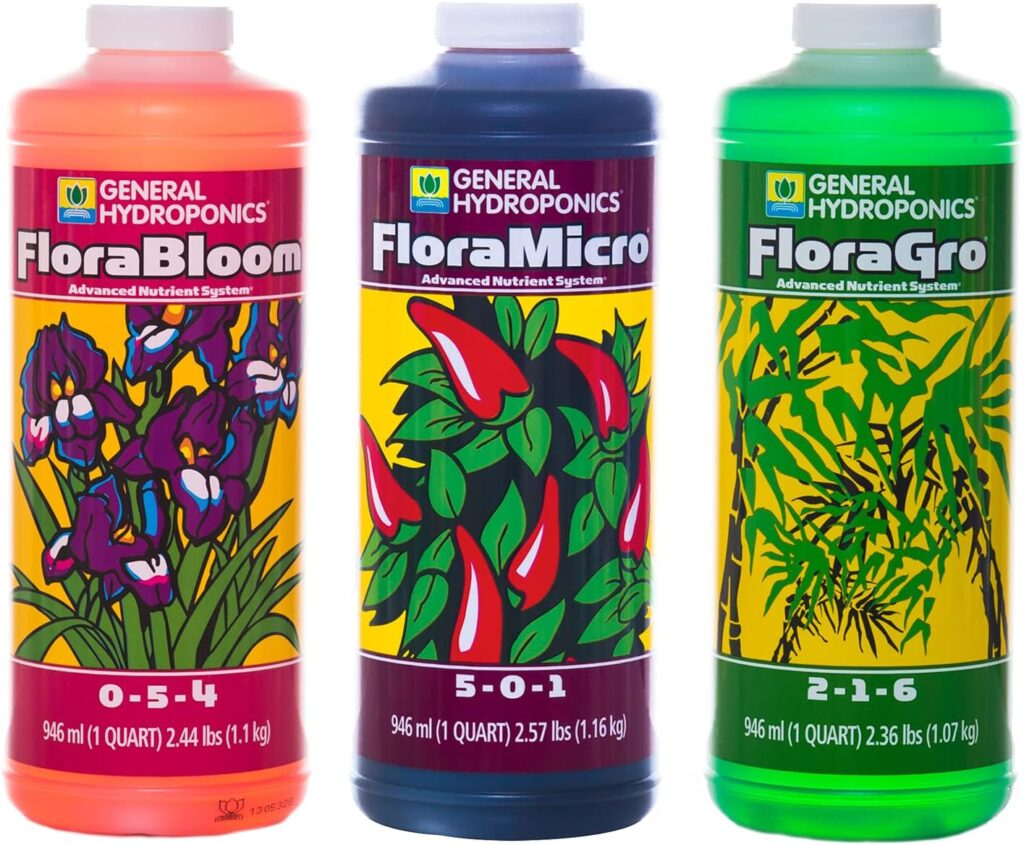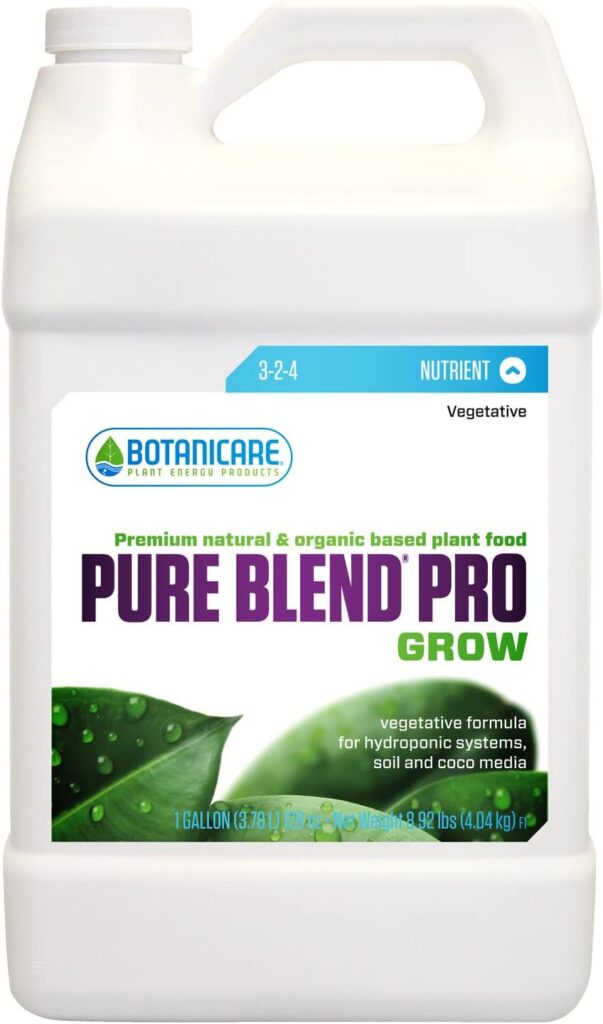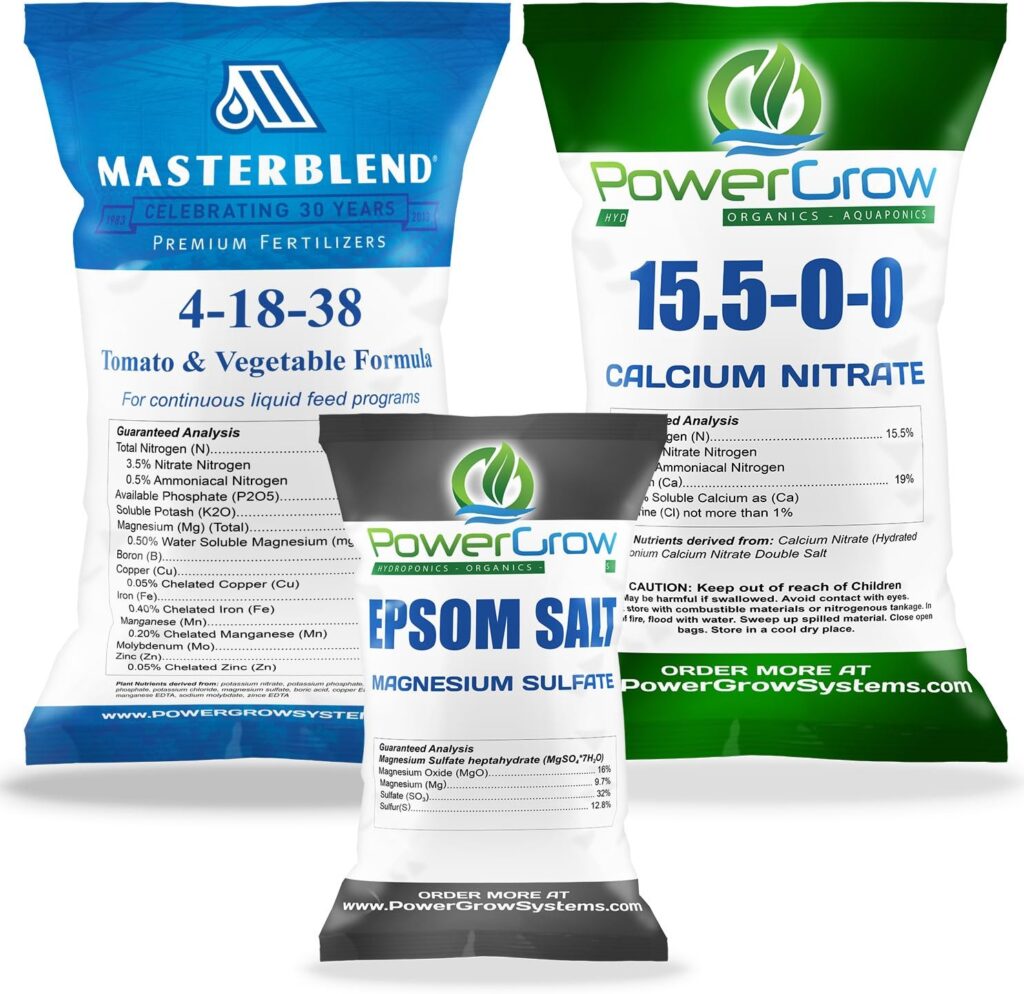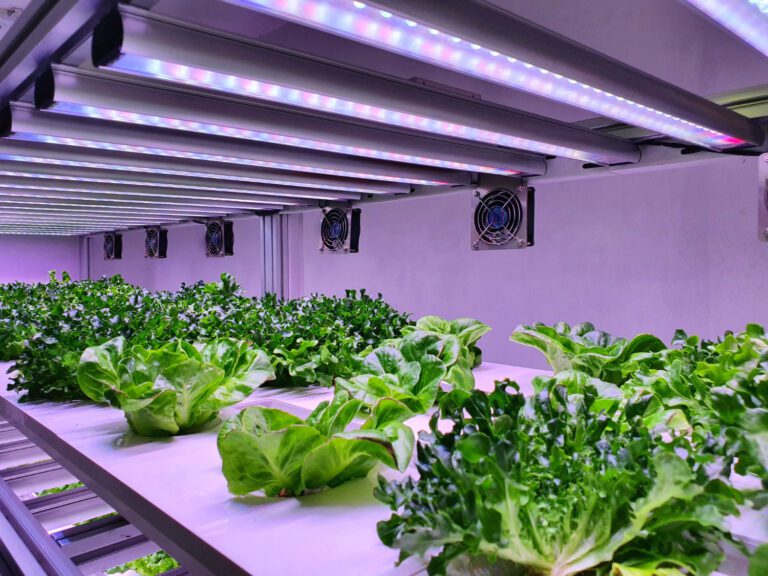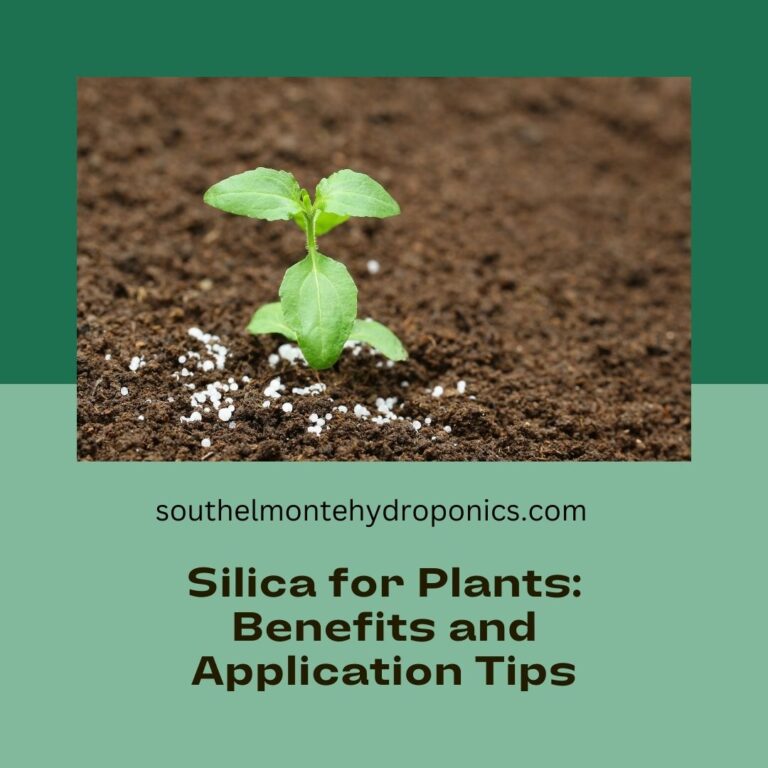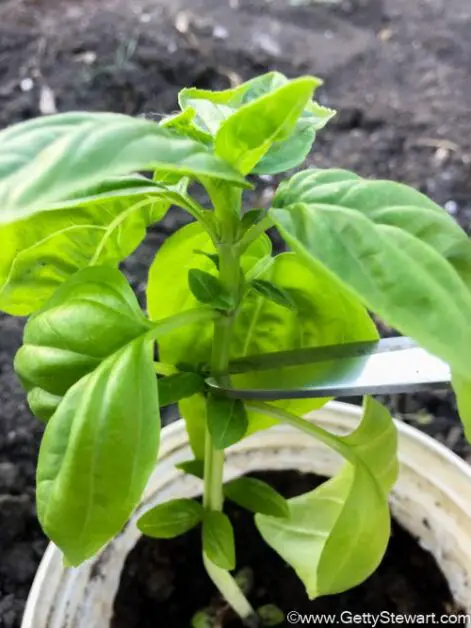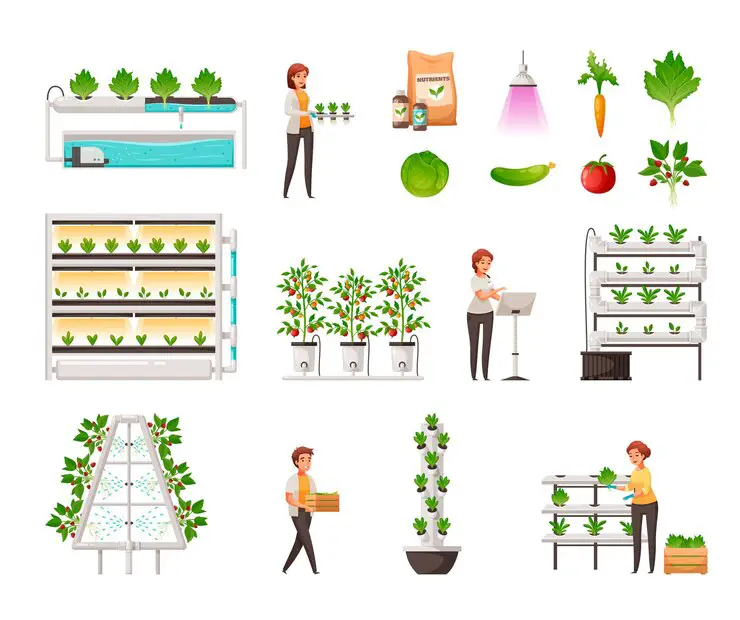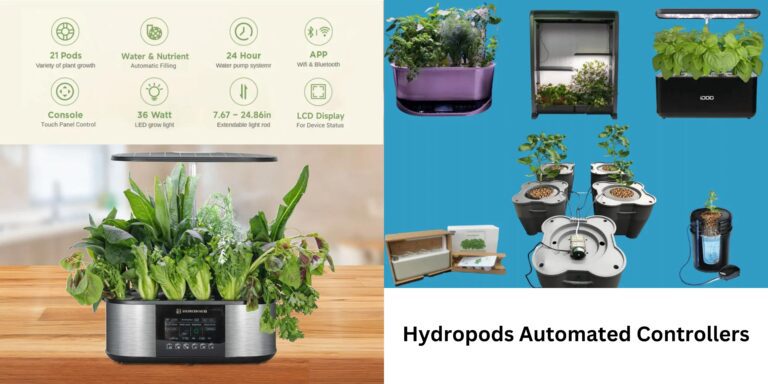Hydroponic Basil: the best way to Grow Fragrant and Flavorful Basil in Water
Table of Contents
The Benefits of Grow Fragrant and Flavorful Basil in Water:
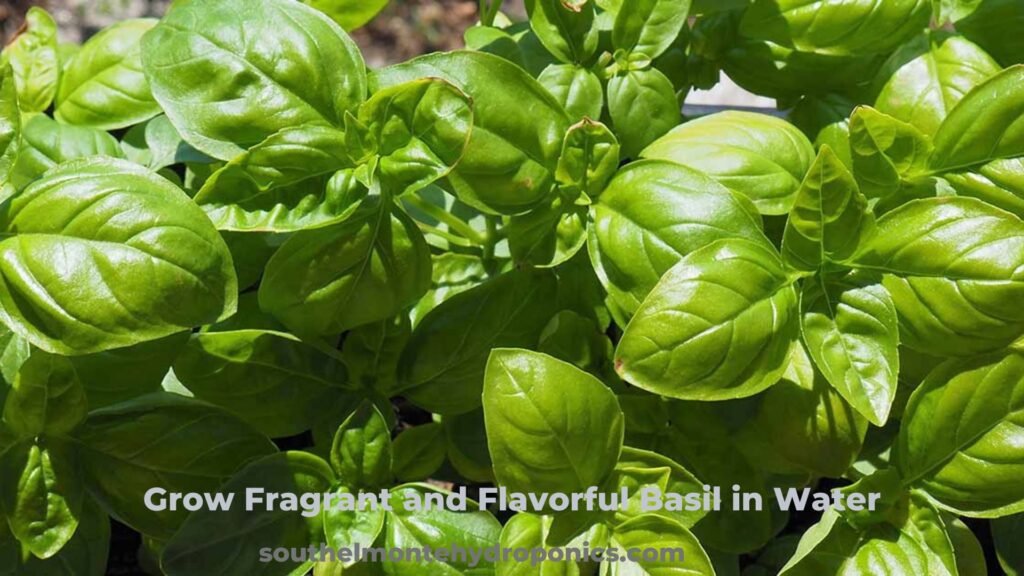
Basil is undoubtedly one of the most popular herbs in the culinary world, prized for its aromatic flavor and versatility in various dishes. While traditionally grown in soil, an increasing number of gardening enthusiasts are discovering the numerous benefits of growing basil hydroponically. By eliminating the need for soil and instead using a nutrient-rich water solution, hydroponic basil cultivation offers an array of advantages that can enhance both productivity and quality.
One key benefit of hydroponic basil cultivation is the significant increase in growth rate compared to traditional soil-based methods. Through careful control of factors such as water, light, and nutrients, hydroponic systems create an optimized environment for plant growth. This efficiency allows basil plants to thrive and reach maturity at a faster pace, providing gardeners with a continuous supply of fresh leaves throughout the year. Additionally, the controlled conditions of hydroponics result in basil that is often more flavorful and aromatic, showcasing its characteristic taste in all its glory.
Selecting the Right Varieties of Basil for Hydroponic Growth
When it comes to selecting the right varieties of basil for hydroponic growth, there are a few key factors to consider. First and foremost, you want to choose basil varieties that are well-suited to indoor growing conditions. Some varieties, such as Genovese basil or Sweet Thai basil, thrive in hydroponic systems due to their adaptability to controlled environments. These varieties are known for their aromatic leaves and robust flavors, making them popular choices for culinary use.
Additionally, it is important to select basil varieties that have a shorter growth cycle and compact size. This is especially crucial in hydroponic systems where space may be limited. Compact varieties like Spicy Globe basil or Dwarf Greek basil are great options as they can be grown in tight spaces without compromising the overall yield. By selecting basil varieties that are suitable for hydroponic growth, you can maximize your chances of a successful and bountiful harvest.
Creating the Perfect Hydroponic Setup for Basil
To create the perfect hydroponic setup for growing basil, there are several key factors to consider. First, you need to choose the right type of hydroponic system for your basil plants. There are various options available, including nutrient film technique (NFT), deep water culture (DWC), and aeroponics. Each system has its own advantages and disadvantages, so it’s important to research and select the one that suits your needs and requirements.
Next, you need to provide the right environmental conditions for your basil plants. This includes ensuring the proper temperature, humidity, and airflow within your hydroponic setup. Basil thrives in temperatures between 70-80°F (21-27°C) and requires a relative humidity level of around 60-70%. To maintain these conditions, you may need to invest in a temperature and humidity controller, as well as fans for proper airflow.
Additionally, lighting is a crucial aspect of hydroponic basil cultivation. As a high-light plant, basil requires around 12-14 hours of light per day. LED grow lights are highly recommended for their energy efficiency and ability to provide the right spectrum of light for optimal growth. Position the lights at the appropriate distance from the plants to ensure they receive sufficient light without causing stress or burn.
In terms of nutrient solution, basil requires a well-balanced mix of macronutrients (nitrogen, phosphorus, potassium) and micronutrients (iron, calcium, magnesium, etc.). It’s recommended to use a specifically formulated hydroponic nutrient solution that meets the specific requirements of basil plants. Regular monitoring of nutrient levels and pH is essential to avoid deficiencies or imbalances that can hinder plant growth.
Finally, proper maintenance and care are essential for creating the perfect hydroponic setup for basil. This includes regularly checking and adjusting pH and nutrient levels, monitoring water quality, and maintaining cleanliness within your hydroponic system. Regular pruning and harvesting of basil plants also promote healthy growth and encourage higher yields.
By considering these factors and implementing them in your hydroponic setup, you can create the ideal environment for growing basil hydroponically. Keep in mind that experimentation and fine-tuning may be required until you find the perfect balance for your specific basil varieties and growing conditions.
Providing the Ideal Nutrient Solution for Hydroponic Basil
To ensure optimal growth and productivity in hydroponic basil, providing the ideal nutrient solution is of utmost importance. Basil, like all plants, requires a balanced and tailored mix of nutrients to thrive in the water-based growing system. These essential nutrients are traditionally divided into two groups: macro and micronutrients.
Macro nutrients, as the name suggests, are needed in larger quantities. These include nitrogen (N), phosphorus (P), and potassium (K), commonly referred to as NPK. Nitrogen is crucial for leaf growth and overall vigor, phosphorus aids in root development, flowering, and fruiting, while potassium is essential for overall plant health and disease resistance. Hydroponic basil grows best with 100 to 150 ppm of nitrogen in the nutrient solution.
On the other hand, micronutrients are required in smaller amounts but are equally vital for the plant’s well-being. These include elements like iron (Fe), manganese (Mn), zinc (Zn), copper (Cu), and boron (B), among others. These micronutrients play crucial roles in various biochemical processes, such as photosynthesis, enzyme activation, and hormone production.
Hydroponic basil requires low levels of fertilization, growing best with 100 to 150 ppm N for containerized crops or 0.5 to 1.5 mS/cm for hydroponic nutrient solutions. The optimal pH for hydroponic basil is between 5.8 and 6.2.
The following table shows the approximate nutrient concentrations for hydroponic basil at different stages of life cycle, based on :
Table
| Stage | Nitrogen (ppm) | Calcium (ppm) | Magnesium (ppm) | Potassium (ppm) | Phosphorus (ppm) | Micronutrients (ppm) |
|---|---|---|---|---|---|---|
| Seedling | 50 | 50 | 25 | 75 | 25 | 2 |
| Vegetative | 100 | 100 | 50 | 150 | 50 | 4 |
| Flowering | 75 | 75 | 37.5 | 112.5 | 37.5 | 3 |
The following table shows the approximate plant content of essential nutrients for hydroponic basil, based on :
| Element | Symbol | Plant Content (%) |
|---|---|---|
| Carbon | C | 45 |
| Hydrogen | H | 6 |
| Oxygen | O | 45 |
| Nitrogen | N | 4.5 |
| Phosphorus | P | 0.5 |
| Potassium | K | 5 |
| Calcium | Ca | 0.5 |
| Magnesium | Mg | 0.3 |
| Sulfur | S | 0.3 |
| Iron | Fe | 0.0015 |
| Zinc | Zn | 0.0005 |
| Manganese | Mn | 0.0005 |
| Boron | B | 0.0003 |
| Copper | Cu | 0.0002 |
| Molybdenum | Mo | 0.00001 |
| Chlorine | Cl | 0.00001 |
Creating an ideal nutrient solution for hydroponic basil involves carefully measuring and adjusting the nutrient concentrations to match the specific needs of the plant throughout its growth stages. It’s essential to strike the right balance, as too little or too much of a particular nutrient can lead to deficiencies or toxicities, both of which can hinder the plant’s growth and overall productivity. Monitoring the nutrient levels regularly, either through plant tissue analysis or electrical conductivity (EC) meters, is key to ensuring that the plants receive the optimal nutrition they require to thrive in the hydroponic system.
Ideal nutrient solutions for hydroponic basil :
General Hydroponics Flora Series: This is a three-part nutrient solution that consists of FloraGro, FloraMicro, and FloraBloom. It is designed to provide optimal nutrition for plants at different stages of growth. For hydroponic basil, you can use the following formula: 5 ml of FloraGro, 5 ml of FloraMicro, and 2.5 ml of FloraBloom per gallon of water.
Botanicare Pure Blend Pro: This is a one-part nutrient solution that contains organic and mineral elements. It is formulated to enhance the flavor and aroma of plants. For hydroponic basil, you can use the following formula: 5 ml of Pure Blend Pro Grow per gallon of water during the vegetative stage, and 5 ml of Pure Blend Pro Bloom per gallon of water during the flowering stage.
Masterblend Tomato Formula: This is a two-part nutrient solution that consists of Masterblend Tomato 4-18-38 and Calcium Nitrate 15.5-0-0. It is designed to provide high yields and quality for tomato plants, but it can also be used for other crops, such as basil. For hydroponic basil, you can use the following formula: 2 grams of Masterblend Tomato, 2 grams of Calcium Nitrate, and 1 gram of Epsom Salt per gallon of water .
Understanding the Lighting Requirements for Hydroponic Basil
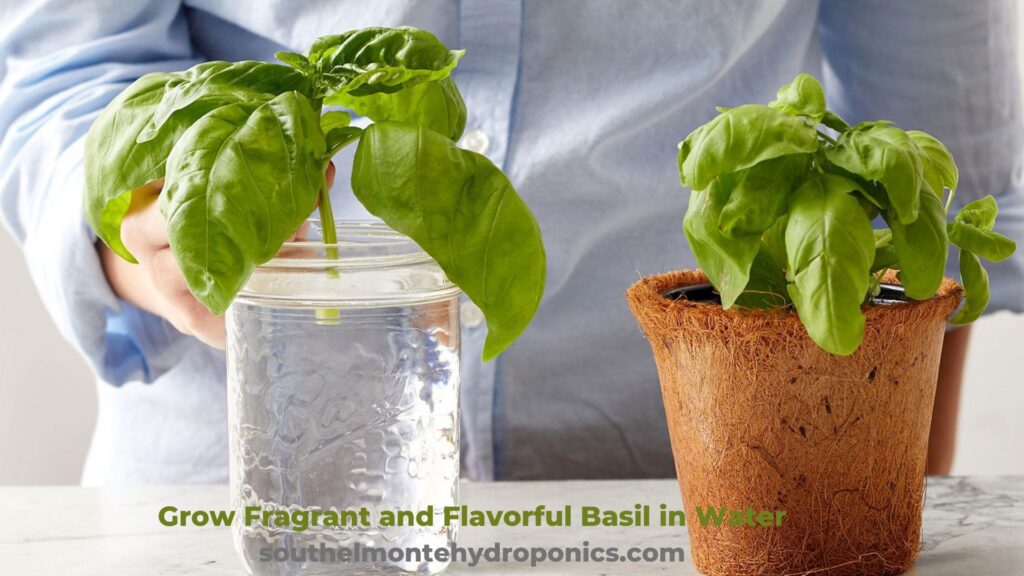
Hydroponic basil, just like its soil-grown counterpart, requires proper lighting to thrive and produce a bountiful harvest. The right amount and quality of light are crucial for this aromatic herb’s growth, development, and overall health.
In a Grow Fragrant and Flavorful Basil in Watersystem, providing the ideal lighting conditions can be achieved through the use of artificial lights. High-intensity discharge (HID) lamps, particularly metal halide (MH) and high-pressure sodium (HPS) bulbs, are commonly used for growing hydroponic basil. These lights emit a wide spectrum of light that closely resembles natural sunlight, ensuring that the plants receive the necessary wavelengths for photosynthesis. MH lamps are ideal for the vegetative stage, promoting lush and bushy growth, while HPS lamps are suitable for flowering and fruiting, encouraging robust basil plants with abundant foliage.
During the vegetative stage, Grow Fragrant and Flavorful Basil in Water plants require around 14 to 16 hours of light per day. This extended light period stimulates growth and helps establish a strong foundation for the plants. As the plants transition to the flowering and fruiting stage, the light duration can be reduced to 10 to 12 hours per day, mimicking the natural change in daylight hours during the summer. Controlling the light cycle is crucial for basil’s growth and should be carefully regulated with timers to ensure consistency and maximize productivity.
Remember, light is one of the most important factors when it comes to hydroponic basil cultivation. Providing the correct amount and quality of light guarantees healthy and vigorous plants, resulting in a plentiful harvest of fragrant, flavorful leaves.
Proper Watering Techniques to Grow Basil in Water
Proper watering techniques are essential for the successful growth of hydroponic basil. Unlike traditional soil gardening, hydroponics requires a more precise and controlled approach to watering. Overwatering or underwatering can lead to various problems, such as root rot, nutrient deficiencies, and stunted growth. Therefore, it is crucial to understand the specific watering needs of hydroponic basil and implement an appropriate watering schedule.
The first step in proper watering is to ensure that your hydroponic system has a reliable and consistent water supply. This can be achieved by using a timer-controlled pump or a recirculating system that continuously circulates the nutrient solution. Consistency is key, as fluctuations in water availability can stress the plants and impact their overall health to Grow Fragrant and Flavorful Basil in Water.
When it comes to the frequency of watering, it is important to strike a balance. Too frequent watering can suffocate the roots and limit oxygen availability, while infrequent watering can lead to dehydration and nutrient imbalances. Generally, hydroponic basil benefits from multiple short watering cycles throughout the day, allowing the roots to absorb nutrients while maintaining oxygen levels. Monitoring the moisture levels in the growing medium or tracking the weight of the pots can help determine the optimal watering frequency for your hydroponic basil.
Additionally, it is crucial to pay attention to the duration of each watering cycle. A rule of thumb is to water until a small amount of excess solution drains from the bottom of the container, ensuring that the entire growing medium is thoroughly moistened. However, it is essential to avoid waterlogged conditions as they can hamper root function and promote the growth of harmful pathogens. Regular monitoring of the moisture levels and adjusting the watering duration accordingly will help maintain the ideal balance for healthy hydroponic basil growth.
In conclusion, proper watering techniques are vital for successfully cultivating Grow Fragrant and Flavorful Basil in Water. Consistent water supply, a balanced watering frequency, and adequate drainage contribute to optimal root function, nutrient absorption, and overall plant health. By following these guidelines, gardening enthusiasts can ensure bountiful harvests of fragrant and flavorful hydroponic basil.
Maintaining the Right Temperature and Humidity Levels for Basil in Water
Maintaining the right temperature and humidity levels is crucial for the successful growth of hydroponic basil. Basil is a warm-season herb that thrives in temperatures between 70°F and 85°F (21°C to 29°C) during the day and slightly cooler temperatures of 55°F to 65°F (13°C to 18°C) during the night. It is important to provide a consistent temperature range within these parameters to ensure healthy growth and prevent stress on the plants.
To achieve optimal temperature levels, it is recommended to use a greenhouse or grow tent that allows for temperature control. Installing ventilation systems, such as fans or vents, can help regulate the temperature by circulating air and preventing heat buildup. Additionally, using shade cloth or reflective materials on the sides of the growing area can help protect the plants from direct sunlight and excessive heat.
Humidity levels also play a significant role in the growth of hydroponic basil. Basil thrives in moderate humidity levels between 40% and 60%. High humidity can lead to the growth of fungal diseases, such as powdery mildew, while low humidity can cause the plants to lose moisture and become stressed.
To maintain the ideal humidity levels, it is important to monitor and adjust the environment accordingly. Using a hygrometer can help accurately measure humidity levels within the growing area. If the humidity is too high, providing proper air circulation through fans or dehumidifiers can help reduce excess moisture. On the other hand, if the humidity is too low, using humidifiers or trays of water can help increase humidity levels. Striking the right balance in temperature and humidity levels will create the optimal growing conditions for hydroponic basil and ensure healthy and vigorous plants.
Preventing and Treating Common Pests and Diseases in for Basil in Water
Preventing pests and diseases in hydroponic basil is crucial for ensuring a healthy and thriving crop. As hydroponic systems provide the perfect environment for plant growth, they can also attract various pests and diseases. However, with proper preventative measures and timely treatment, you can keep your basil plants safe and productive.
One effective way to prevent pests and diseases in hydroponic basil is by practicing good hygiene. Regularly clean and disinfect your hydroponic system, including the reservoir, pipes, and growing medium, to remove any potential sources of contamination. Avoid using any contaminated water or nutrient solutions, as they can introduce harmful pathogens to your plants. Additionally, regularly inspect your plants and remove any dead or diseased leaves to prevent the spread of diseases and discourage pest infestations.
Another important measure for preventing pests and diseases is maintaining a balanced and healthy nutrient solution. Ensure that your basil plants receive optimal nutrition by providing all the necessary macro and micronutrients in the correct ratios. Imbalances in nutrient levels can weaken plants, making them more susceptible to pests and diseases. Monitor the pH levels of your nutrient solution regularly and adjust them if needed to create an environment that is unfavorable for pathogens and pests.
Despite all preventive measures, it is possible for pests or diseases to still affect your hydroponic basil. In such cases, it is crucial to identify the problem early and take immediate action. Depending on the specific pest or disease, treatments can range from natural remedies such as neem oil or insecticidal soap to the use of beneficial insects like ladybugs or predatory mites. For diseases, fungicides or biocontrol agents may be necessary. Identifying the pest or disease correctly is essential for selecting the most effective treatment option.
Remember, a proactive approach to preventing pests and diseases in hydroponic basil will save you time, effort, and potential losses. By implementing good hygiene practices, providing optimal nutrition, and swift action in case of an outbreak, you can ensure a thriving and healthy crop of basil in your hydroponic system. Stay vigilant, and your basil plants will reward you with an abundance of fresh and flavorful leaves.
Pruning and Harvesting Techniques for Basil in Water
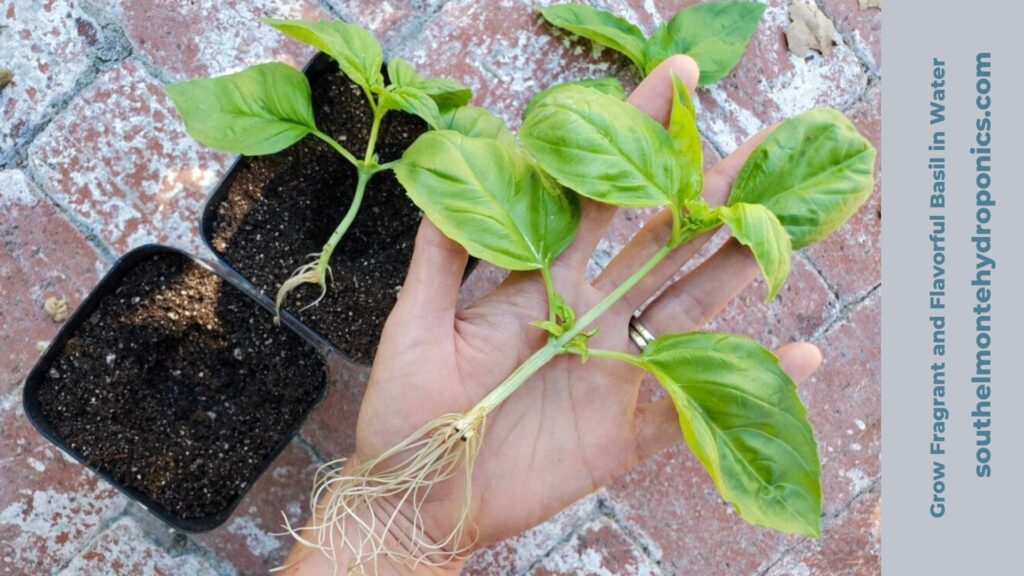
Pruning and harvesting are essential practices in maintaining healthy and productive hydroponic basil plants. Regular pruning helps promote bushier growth and prevents the plants from becoming leggy or going to seed too quickly. When it comes to harvesting, knowing the proper techniques ensures that you can enjoy a bountiful and flavorful harvest.
When pruning hydroponic basil, it is important to remove any yellowing or diseased leaves promptly. This helps prevent the spread of diseases and allows the plant to allocate its energy towards healthy growth. Additionally, pinch off the topmost pair of leaves once the plant has developed a few sets of true leaves. This encourages lateral branching and results in a fuller, bushier plant. Remember to use clean, sharp scissors or pruners to make clean cuts and prevent any damage to the stem.
Harvesting hydroponic basil can be done on an ongoing basis, as soon as the plant has developed a sufficient number of leaves. Start by snipping off the outermost, largest leaves from each stem, working your way inward. Leave a few sets of leaves on each stem to ensure the plant continues to thrive. It is recommended to harvest in the morning when the essential oils are at their peak, as this will contribute to the best flavor. Proper harvesting techniques not only ensure a continuous supply of fresh basil but also promote healthy regrowth, allowing you to enjoy the benefits of hydroponic basil throughout the growing season.
Storing and Preserving Basil for Maximum Freshness
Properly storing and preserving hydroponic basil is essential to maintain its maximum freshness and flavor. After all the hard work you’ve put into growing your basil hydroponically, you wouldn’t want it to go to waste due to improper storage techniques. Here are some tips to help you keep your hydroponic basil fresh and flavorful for as long as possible.
Firstly, it’s important to harvest your hydroponic basil at the right time. The best time to harvest basil is in the morning, after the dew has dried, but before the sun gets too hot. This is when the leaves are the most flavorful and aromatic. When harvesting, gently cut the stems just above a pair of leaves, as this will encourage the basil plant to continue growing.
Once harvested, it is crucial to handle the basil with care to prevent bruising or damage. Avoid washing the basil immediately after harvesting, as excess moisture can cause the leaves to wilt quickly. Instead, gently brush off any dirt or debris with a soft brush or cloth. If necessary, you can rinse the basil with cool water just before using it in your recipes.
To store the hydroponic basil, remove any damaged or yellowing leaves and place the remaining stems in a glass or jar filled with water. Cover the basil loosely with a plastic bag and store it at room temperature away from direct sunlight. This will help maintain the basil’s freshness and prevent it from drying out.
Alternatively, Grow Fragrant and Flavorful Basil in Water you can refrigerate the basil to prolong its shelf life. To do this, wrap the stems loosely in a damp paper towel and place them in a plastic bag. Keep in mind that refrigeration may cause the basil to lose some of its aroma and flavor, so it’s best to use refrigerated basil within a few days.
By following these storage tips, you can extend the shelf life of your hydroponic basil and continue enjoying its fresh, aromatic taste in your culinary creations.
Exploring Creative Culinary Uses for Basil
Basil, with its fresh and vibrant flavor, is a versatile herb that can elevate the taste of any dish. When grown hydroponically, basil offers even more benefits, enhancing its flavors and nutritional profile. Exploring the culinary uses of hydroponic basil opens up a world of possibilities for creative and delicious meals.
One of the most popular uses for Grow Fragrant and Flavorful Basil in Water is in pesto sauce. Pesto is a classic Italian sauce made with basil, garlic, pine nuts, Parmesan cheese, and olive oil. The vibrant green color and aromatic flavors of hydroponic basil truly shine in pesto, adding a burst of freshness to pasta, sandwiches, and even as a topping for grilled meats or roasted vegetables.
In addition to pesto, Grow Fragrant and Flavorful Basil in Water can infuse oils, vinegar, and even vodka. The delicate and fragrant leaves of hydroponic basil impart their flavors to the liquids, creating a unique and aromatic twist to dressings, marinades, and cocktails. Imagine adding a few drops of basil-infused olive oil to a Caprice salad or a splash of basil-infused vodka to a refreshing summer cocktail – endless possibilities! By exploring hydroponic basil’s diverse culinary uses, you can elevate your cooking to new heights. Stay tuned for more inspiring and mouthwatering ideas on incorporating this incredible herb into your dishes.
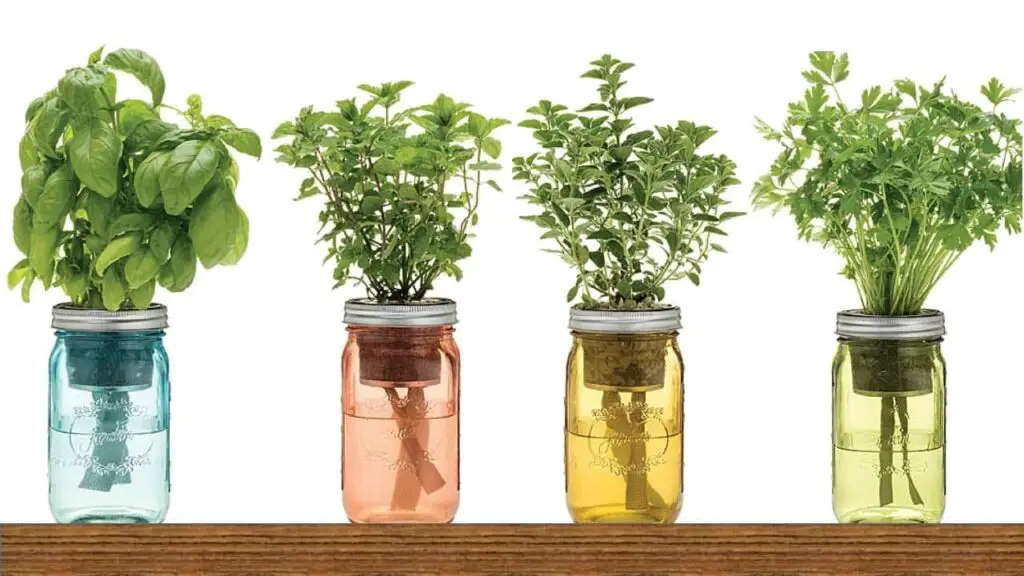
Here’s a basic table outlining key considerations for growing fragrant and flavorful basil in water:
| Aspect | Consideration |
|---|---|
| Basil Variety | Choose a basil variety known for its fragrance and flavor, such as Sweet Basil (Ocimum basilicum). |
| Propagation Method | Consider using cuttings from a healthy basil plant for propagation in water. |
| Water Quality | Use clean, preferably distilled or filtered water to prevent the introduction of contaminants. |
| Container Type | Select a suitable container for rooting, ensuring it provides stability for the growing basil cuttings. |
| Light Requirements | Place the container in a location with ample sunlight, as basil thrives in at least 6-8 hours of sunlight. |
| Changing Water | Change the water regularly (every few days) to maintain oxygen levels and prevent stagnation. |
| Temperature | Maintain a warm environment, around 70-75°F (21-24°C), for optimal rooting and growth of basil cuttings. |
| Nutrient Additions | Consider adding a diluted nutrient solution to the water to provide essential nutrients for basil growth. |
| Pruning | Regularly prune the basil to encourage bushier growth and enhance the concentration of essential oils. |
| Harvesting Tips | Harvest basil leaves regularly, pinching off the top growth to promote continuous leaf production. |
| Pest Management | Keep an eye out for pests and take preventive measures, such as neem oil or insecticidal soap if needed. |
| Companion Plants | Consider planting basil alongside compatible companion plants to enhance overall garden health. |
Growing basil in water is a convenient method, and paying attention to these considerations can help you cultivate fragrant and flavorful basil successfully.
Troubleshooting Common Issues in Hydroponic Basil Growth
When growing basil hydroponically, there are a few common issues that may arise. One challenge growers face is nutrient deficiencies. Basil requires a balanced nutrient solution to thrive, and deficiencies can lead to stunted growth and yellowing leaves. To troubleshoot this, it is important to regularly test the nutrient levels in the solution and adjust accordingly. Adding a balanced hydroponic nutrient solution or specific micronutrients can help address deficiencies and promote healthy growth.
Another issue to watch out for is root rot. Root rot is often caused by overwatering or poor drainage, leading to the growth of harmful pathogens. To prevent root rot, it is essential to maintain proper watering techniques, ensuring that the plants receive adequate moisture without becoming waterlogged. Additionally, using a well-draining growing medium and providing adequate oxygen levels to the roots can help prevent the development of root rot. If root rot becomes evident, it is crucial to take immediate action by adjusting watering practices and adding beneficial bacteria or fungicides to combat the pathogens.
By understanding and addressing these common issues, growers can troubleshoot problems in hydroponic basil growth and ensure healthy and thriving plants. Regular monitoring, proper nutrient management, and attentive care will contribute to successful hydroponic basil cultivation.
Tips for Success in Growing Fragrant and Flavorful Hydroponic Basil
To ensure success in growing fragrant and flavorful hydroponic basil, there are several key tips to keep in mind. First and foremost, selecting the right basil variety is crucial. While there are numerous types of basil available, it is important to choose varieties that are well-suited for hydroponic growth. Some popular options include Genovese basil, Thai basil, and lemon basil, all of which thrive in a hydroponic environment.
Proper lighting is another essential factor to consider. Basil plants require a minimum of six to eight hours of bright, indirect light each day to grow and develop their characteristic flavors and aromas. Therefore, investing in high-quality LED grow lights or fluorescent bulbs specifically designed for hydroponics is highly recommended. Additionally, it’s important to ensure that the lights are positioned at the correct distance from the plants to optimize light absorption without causing heat stress.
Watering techniques also play a pivotal role in the success of growing fragrant and flavorful hydroponic basil. Unlike traditional soil-based growing methods, hydroponic systems deliver water and nutrients directly to the plant’s root system. It is crucial to maintain an appropriate balance between moisture and oxygen to prevent root rot and other water-related issues. Regularly monitoring the water levels and adjusting as necessary will help promote healthy growth and maximize the aromatic and flavorful qualities of the basil.
By following these tips and implementing best practices, gardening enthusiasts can achieve outstanding results when growing fragrant and flavorful hydroponic basil. Whether using it as a culinary herb or for its therapeutic properties, the rewards of growing basil hydroponically are bound to be both satisfying and delicious.
Can I use any variety of Grow Fragrant and Flavorful Basil in Water?
While you can technically use any variety of basil for hydroponic growth, it is recommended to select varieties that are well-suited for this type of cultivation. Some popular choices include Genovese basil, Thai basil, and Purple basil.
How do I create the perfect Grow Fragrant and Flavorful Basil in Water setup?
To create the perfect hydroponic setup for basil, you will need to ensure proper lighting, temperature, humidity, and nutrient solution. It is important to research and invest in the right equipment such as grow lights, air circulation systems, and pH meters.
What nutrient solution should I use for Grow Fragrant and Flavorful Basil in Water?
Basil requires a balanced nutrient solution that provides essential macronutrients and micronutrients. Look for hydroponic nutrient solutions specifically formulated for herbs or leafy greens, and follow the manufacturer’s recommended dosage instructions.
What lighting requirements does hydroponic basil have?
Hydroponic basil requires around 12-16 hours of artificial light per day. Full-spectrum grow lights, such as LED or fluorescent lights, are commonly used to provide the necessary light intensity and spectrum for optimal growth.
How often should I water hydroponic basil?
Hydroponic basil should be watered regularly to ensure the roots receive adequate moisture. The frequency of watering will depend on factors such as the type of hydroponic system used, the size of the plants, and the environmental conditions. It is important to monitor the moisture levels consistently.
What temperature and humidity levels are ideal for Grow Fragrant and Flavorful Basil in Water?
Generally, hydroponic basil thrives in temperatures between 65-80°F (18-27°C) with a relative humidity of around 50-70%. It is crucial to maintain stable temperature and humidity levels to prevent stress and promote healthy growth.
How can I prevent and treat common pests and diseases in Grow Fragrant and Flavorful Basil in Water?
Preventing pests and diseases in hydroponic basil involves maintaining a clean and sterile growing environment. Regularly inspect the plants for signs of pests such as aphids or spider mites and promptly treat them with organic insecticides or beneficial insects. To prevent diseases, practice good hygiene and avoid overwatering.
When and how should I prune and harvest hydroponic basil?
Pruning can be done throughout the growing cycle to encourage bushier growth. Harvesting can begin once the basil plants have developed enough leaves, usually around 6-8 weeks after planting. Harvest by snipping the stems just above a leaf node to promote new growth.
How can I store and Grow Fragrant and Flavorful Basil in Water for maximum freshness?
To store hydroponic basil, place the freshly harvested stems in a jar or vase with water, similar to a bouquet of flowers. Cover the leaves loosely with a plastic bag and store in the refrigerator. This will help maintain the freshness and flavor for up to a week.
What are some creative culinary uses for hydroponic basil?
Hydroponic basil can be used in a wide variety of culinary dishes. It is commonly used in pasta sauces, pestos, salads, soups, and infused oils. It also pairs well with tomatoes, mozzarella cheese, and fresh summer fruits.
What should I do if I encounter common issues in Grow Fragrant and Flavorful Basil in Water?
If you encounter common issues in hydroponic basil growth, such as yellowing leaves, nutrient deficiencies, or stunted growth, it is important to identify the underlying cause. This could be due to pH imbalance, improper nutrient levels, or environmental factors. Adjust the necessary parameters accordingly and monitor the plants closely.
What are some additional tips for success in Grow Fragrant and Flavorful Basil in Water?
Some additional tips for success include maintaining proper air circulation to prevent mold and fungal diseases, using a timer for consistent lighting, regularly checking and adjusting pH and nutrient levels, and staying attentive to the plants’ overall health and growth patterns.

